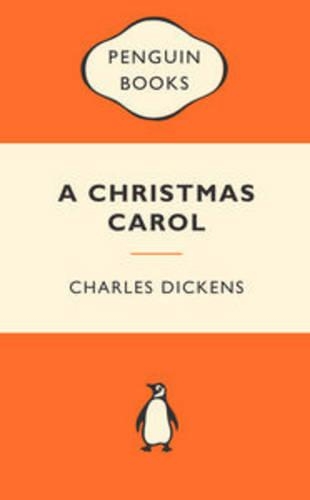
A Christmas Carol: Popular Penguins
(Paperback)
Available Formats
Hardback
Published: 14th November 2016
Hardback
Published: 25th November 1994
Paperback
Published: 1st November 2013
Paperback
Published: 25th February 2015
Hardback
Published: 15th September 2009
Paperback
Published: 7th January 2013
Paperback
Published: 15th September 2017
Paperback
Published: 12th January 2004
Paperback
Published: 26th November 2019
Leather / fine binding, Bonded Leather
Published: 1st October 2019
Hardback
Published: 22nd October 2019
Paperback
Published: 1st December 2009
Paperback
Published: 11th November 2025
Paperback
Published: 3rd September 2012
Hardback
Published: 11th November 2025
Hardback
Published: 7th September 2022
Hardback, New edition
Published: 14th September 2021
Hardback
Published: 6th November 2014
Paperback
Published: 1st November 2011
Hardback
Published: 15th September 2015
Publishing Details
A Christmas Carol: Popular Penguins
By (Author) Charles Dickens
Penguin Books Ltd
Penguin Books Ltd
28th June 2010
United Kingdom
Classifications
General
Fiction
Physical Properties
Paperback
116
Width 113mm, Height 180mm, Spine 8mm
78g
Description
Dickens's story of solitary miser Ebenezer Scrooge, who is taught the true meaning of Christmas by a series of ghostly visitors, has proved one of his most well-loved works. Ever since it was published in 1843 it has had an enduring influence on the way we think about the traditions of Christmas.
Author Bio
Charles Dickens was born in Portsmouth on 7 February 1812, the second of eight children. Dickens's childhood experiences were similar to those depicted in David Copperfield. His father, who was a government clerk, was imprisoned for debt and Dickens was briefly sent to work in a blacking warehouse at the age of twelve. He received little formal education, but taught himself shorthand and became a reporter of parliamentary debates for the Morning Chronicle. He began to publish sketches in various periodicals, which were subsequently republished as Sketches by Boz. The Pickwick Papers was published in 1836-7, after a slow start it became a publishing phenomenon and Dickens's characters the centre of a popular cult. Part of the secret of his success was the method of cheap serial publication he adopted; thereafter, all Dickens's novels were first published in serial form. He began Oliver Twist in 1837, followed by Nicholas Nickleby (1838) and The Old Curiosity Shop (1840-41). After finishing Barnaby Rudge (1841) Dickens set off for America; he went full of enthusiasm for the young republic but, in spite of a triumphant reception, he returned disillusioned. His experiences are recorded in American Notes (1842). A Christmas Carol, the first of the hugely popular Christmas Books, appeared in 1843, while Martin Chuzzlewit, which included a fictionalized account of his American travels, was first published over the period 1843-4. During 1844-6 Dickens travelled abroad and he began Dombey and Son while in Switzerland. This and David Copperfield (1849-50) were more serious in theme and more carefully planned than his early novels. In later works, such as Bleak House (1853) and Little Dorrit (1857), Dickens's social criticism became more radical and his comedy more savage. In 1850 Dickens started the weekly periodical Household Words, succeeded in 1859 by All the Year Round. Dickens's health was failing during the 1860s and the physical strain of the public readings which he began in 1858 hastened his decline, although Our Mutual Friend (1865) retained some of his best comedy. His last novel, The Mystery of Edwin Drood, was never completed and he died on 9 June 1870. Public grief at his death was considerable and he was buried in the Poets' Corner of Westminster Abbey.
